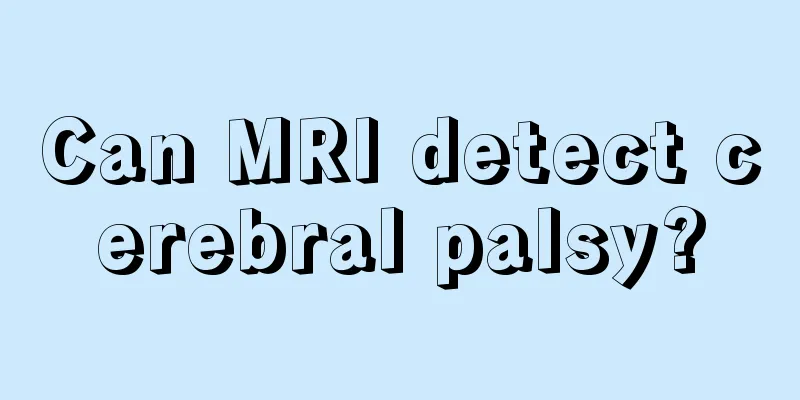Can MRI detect cerebral palsy?

|
Magnetic resonance imaging is a relatively common detection method, which is effective in examining cerebral palsy. If a child shows some symptoms of cerebral palsy after birth, he or she should be examined in time. Various examinations can be performed one month after birth. Generally speaking, MRI is the best and preferred examination method for children with cerebral palsy. It is of great significance for the analysis of the disease and future treatment. Can MRI diagnose cerebral palsy? Relationship between abnormal MRI imaging and cerebral palsy in children with cerebral palsy: Spastic cerebral palsy is mainly characterized by white matter lesions and congenital malformations; Ataxia-type cerebral palsy basically has congenital cerebellar hypoplasia; The MRI findings of dyskinetic, hypotonic, and mixed cerebral palsy are diverse and are accompanied by intellectual disability and speech disorders, which are often seen in diffuse white matter changes and brain atrophy. MRI imaging differs depending on the location of cerebral palsy. Research by foreign scholars has found that spastic quadriplegia is often manifested by periventricular leukomalacia (66%), hemiplegia is mostly unilateral brain damage; spastic quadriplegia is mainly characterized by congenital brain malformations and full-term brain damage, accounting for 42% and 33% respectively, manifested as extensive, bilateral, diffuse brain damage. A 2-year-old girl, axial T2WI showed strip-shaped abnormal signal shadows beside the bilateral lateral ventricles, showing high signal, which was considered to be hypomyelination in the white matter of the bilateral lateral ventricles. A 5-month-old male. Coronal T2WIFLIR scan showed diffuse cerebral atrophy and enlargement of the bilateral lateral and third ventricles, suggesting the possibility of obstructive hydrocephalus. Male, 6 months old, axial T1WI showed strip-shaped abnormal signal in the right basal ganglia, with high signal, which was considered as calcification in the right basal ganglia Male, 2 years and 10 months old, sagittal T1WI showed thinning and small body and splenium of corpus callosum, and dysplasia of corpus callosum. In summary, MRI examination is the preferred method of imaging examination for children with cerebral palsy, and it is of great significance for analyzing the causes of cerebral palsy, guiding diagnosis and treatment, and judging the prognosis. Children with cerebral palsy have a high rate of abnormal MRI findings, and their MRI features are closely related to the child's gestational age, disease type, site of onset, and cause of disease. |
<<: What's wrong with the bald spot on the back of the head
>>: How do I know if I am calcium deficient
Recommend
Several specific methods for examining rectal cancer
Among intestinal diseases, rectal lesions are rel...
What to do with bronchitis dry cough, what to eat
Many friends know that dry cough is a common symp...
The fastest way to reduce butterfly arms
Obesity is a major problem that affects the healt...
What are the symptoms of anal eczema
Anal eczema is a skin disease that occurs in the ...
Is human papillomavirus in cervical cancer contagious?
The human papillomavirus (HPV) that causes cervic...
What are the key points in diagnosing skin cancer
Malignant tumors such as skin cancer seriously af...
Small cell lung cancer: what to pay attention to in life to prolong life
Small cell lung cancer is endangering our health....
Can the narrowing of the joint space be restored?
Joints are a very important part of the human bod...
What to do if you have liver cancer and you sleep while sitting
Liver cancer is a very common malignant tumor of ...
Can liver cancer patients eat black fish? Liver cancer patients mainly eat this type of food
Patients with liver cancer can eat black fish app...
How to prevent bedsores from long-term sitting
When a person is bedridden for a long time, the b...
Is frozen yogurt high in calories?
Frozen yogurt is a new product that has become po...
Does nursing after chemotherapy for nasopharyngeal carcinoma help recovery?
Generally speaking, chemotherapy can kill cancer ...
Do breast cancer patients need to have an abortion if they get pregnant?
Should pregnant breast cancer patients have abort...
How to lose weight by standing for a long time
Standing for a long time without resting will aff...









